SparkFun Environmental Combo Breakout - ENS160/BME280 (Qwiic)
The SparkFun ENS160/BME280 Environmental Combo Breakout takes care of all your atmospheric-quality sensing needs with the popular ENS160 and BME280 ICs. This unique breakout provides various environmental data, including AQI, TVOCs, equivalent CO2 (or eCO2) levels, barometric pressure, humidity, and temperature. To make it even easier to use this breakout, all communication is enacted exclusively via I2C, utilizing our handy Qwiic system. However, if you prefer a breadboard, we still have broken-out 0.1in. spaced pins.
The ENS160 is the replacement for the popular CCS811 sensor, providing readings for equivalent CO2 (or eCO2) in the parts per million (PPM) and total volatile organic compounds in the parts per billion (PPB). The sensor can also provide the Air Quality Index (AQI). The ENS160 also has a feature that allows it to fine-tune its readings if it can access the current humidity and temperature. Luckily, the BME280 provides humidity, temperature, and barometric pressure! This allows the sensors to work together to give us more accurate readings than they’d be able to provide.
Add the Environmental Combo Breakout to your next project for building automation, smart home, HVAC, indoor/outdoor navigation, weather forecasting, and even personal health and wellness monitoring!
Note: The I2C address of the Environmental Combo Breakout is 0x53 / 0x77 and is jumper selectable to 0x52 / 0x76. A multiplexer/Mux is required to communicate to multiple Environmental Combo Breakout sensors on a single bus. If you need to use more than one Environmental Combo Breakout sensor, consider using the Qwiic Mux Breakout.
The SparkFun Qwiic Connect System is an ecosystem of I2C sensors, actuators, shields and cables that make prototyping faster and less prone to error. All Qwiic-enabled boards use a common 1mm pitch, 4-pin JST connector. This reduces the amount of required PCB space, and polarized connections mean you can’t hook it up wrong.
- 2x Qwiic-Enabled Connectors
- Input Voltage Range
- Typically 3.3V via Qwiic cable
- ENS160
- I2C Addresses: 0x53 (Default) or 0x52
- Wide Operating Ranges
- VDD: 1.71 1.98V
- VDDIO: 1.71V to 3.6V
- Temperature: -40°C to +85°C
- Humidity: 5% to 95% (non-condensing)
- IAQ standard compliance for AQI, eCO2, and TVOC
- Air Quality Index - Umweltbundesamt (AQI-UBA)
- Range: 1 to 5
- Resolution: 1
- Equivalent Carbon Dioxide (eCO2)
- Range: 400 to 65,000 ppm
- Resolution: 1 ppm
- Total Volatile Organic Compound (TVOC)
- Range: 0 to 65,000 ppb
- Resolution: 1 ppb
- Air Quality Index - Umweltbundesamt (AQI-UBA)
- Immunity to humidity and ozone
- Superior output stability over the whole temperature and relative humidity operating ranges
- Effective ozone compensation
- Independent sensor heater control for highest VOC selectivity and outstanding background discrimination
- BME280
- VDD: 1.71V to 3.6V
- VDDIO: 1.2V to 3.6V
- I2C Addresses: 0x77 (Default) or 0x76
- Temperature
- Operating Range: -40°C to 85°C
- Full accuracy to ± 0.5°C from -0°C to 65°C
- Resolution 0.01°C
- Humidity
- Operating Range: 0% to 100% RH
- Accurate to ±3% from 20% -80% RH
- Resolution: 0.008%RH
- Pressure
- Operating Range: 30,000 Pa to 110,000Pa
- Absolute Accuracy of ±100Pa
- Relative Accuracy of ±12Pa
- Resolution: 0.18Pa
- Altitude Range
- 0ft to 30,000ft (9.2km)
- Relative accuracy of 3.3ft (1m) at sea level, 6.6 (2m) at 30,000ft
- Power LED
- 1.8V AP2127K Voltage Regulator (for ENS160)
- 2.2kΩ Pull-up Resistors
- Jumpers
- Power LED
- I2C Pullup Resistors
- Selectable Addresses
- ENS160: 0x53 (Default) or 0x52
- BME280: 0x77 (Default) or 0x76
- Board Dimensions: 1.0in. x 1.0in. (25.4mm x 25.4mm)
- Weight: 2.50g
- Schematic
- Eagle Files
- Board Dimensions
- Hookup Guide
- Datasheets
- Arduino Libraries
- Micro OLED Example
- Fritzing Part
- Qwiic Info Page
- GitHub Hardware Repo
SparkFun Environmental Combo Breakout - ENS160/BME280 (Qwiic) Product Help and Resources
Sending Sensor Data Over WiFi
January 16, 2022
This tutorial will show you how setup a simple peer-to-peer connection to send and receive sensor data between two ESP32 WiFi boards.
Core Skill: Programming
If a board needs code or communicates somehow, you're going to need to know how to program or interface with it. The programming skill is all about communication and code.
Skill Level: Competent - The toolchain for programming is a bit more complex and will examples may not be explicitly provided for you. You will be required to have a fundamental knowledge of programming and be required to provide your own code. You may need to modify existing libraries or code to work with your specific hardware. Sensor and hardware interfaces will be SPI or I2C.
See all skill levels
Core Skill: Electrical Prototyping
If it requires power, you need to know how much, what all the pins do, and how to hook it up. You may need to reference datasheets, schematics, and know the ins and outs of electronics.
Skill Level: Rookie - You may be required to know a bit more about the component, such as orientation, or how to hook it up, in addition to power requirements. You will need to understand polarized components.
See all skill levels
Comments
Looking for answers to technical questions?
We welcome your comments and suggestions below. However, if you are looking for solutions to technical questions please see our Technical Assistance page.
Customer Reviews
2.7 out of 5
Based on 3 ratings:
1 of 1 found this helpful:
Everything worked as expected!
Results are good. Still need to see if I can get a calibration source, but one thing to note from my comment is the need for forced air cooling over the board, otherwise you'll end up with a temperature offset from the heating sources.
3 of 3 found this helpful:
Requires an a fan to be useful
The ENS160 has an internal heater which causes an approximately 7 degree F increase in the temperature read by the BME280. A fan blowing on the chips would be required to use both the sensors accurately at the same time. If the board were respun, separating the chips a little more might help.
I don't have a way to qualify the TVOC and eCO2 values, but the temperature, relative humidity, and air pressure readings while the ENS160 was in sleep were spot on.
I'll probably purchase a breakout for one or the other to add to my setup, but it would have been better to just buy the individual breakout boards.
1 of 4 found this helpful:
Can't tell you
Bought an Arduino R4 with the Qwiic system but unfortunately the R4 is not working so I can't tell you how this board is working. This review was solicited by SparkFun. Just being honest here.

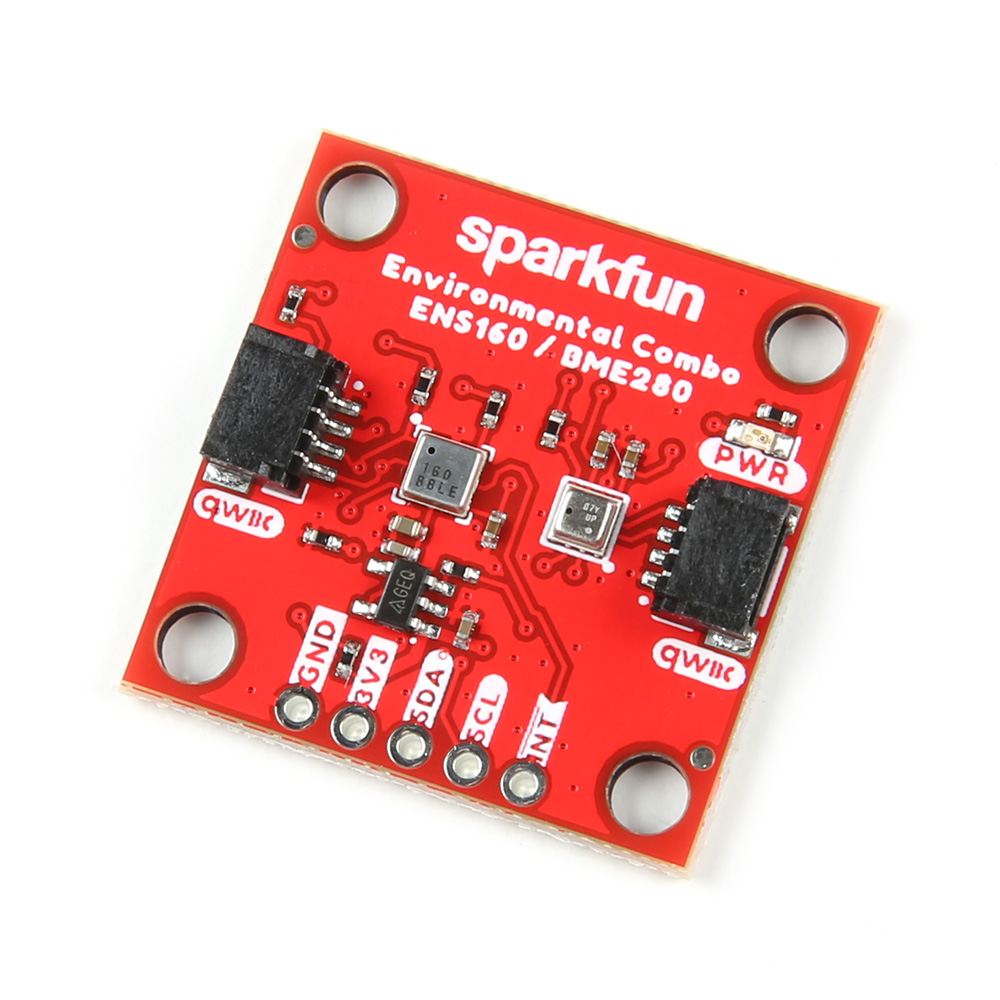
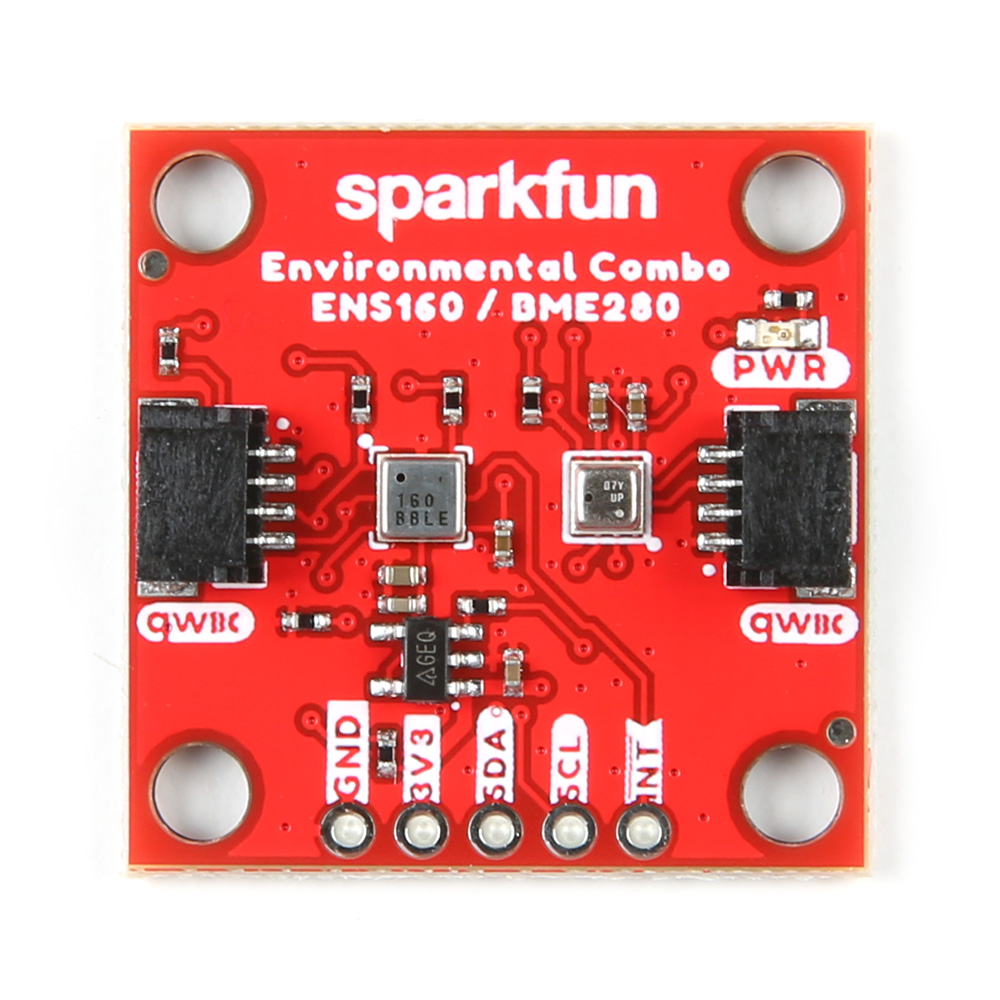
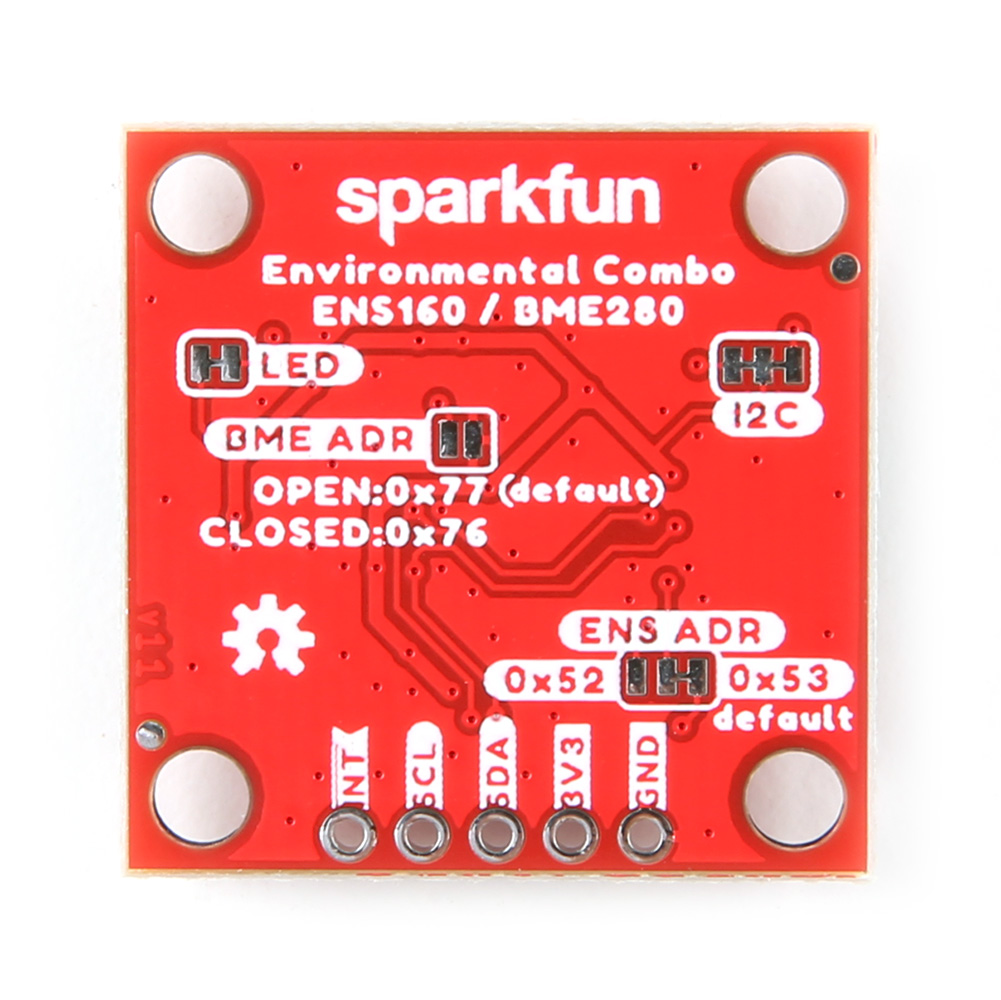
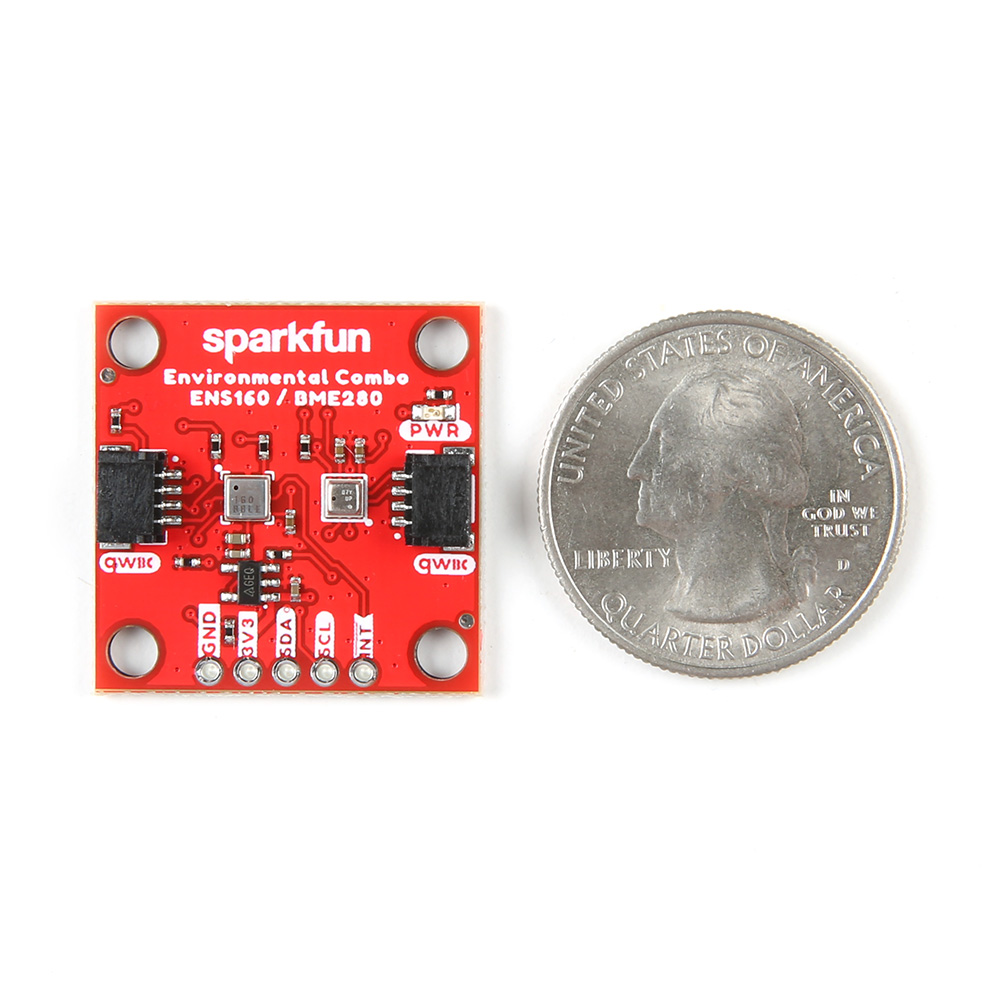
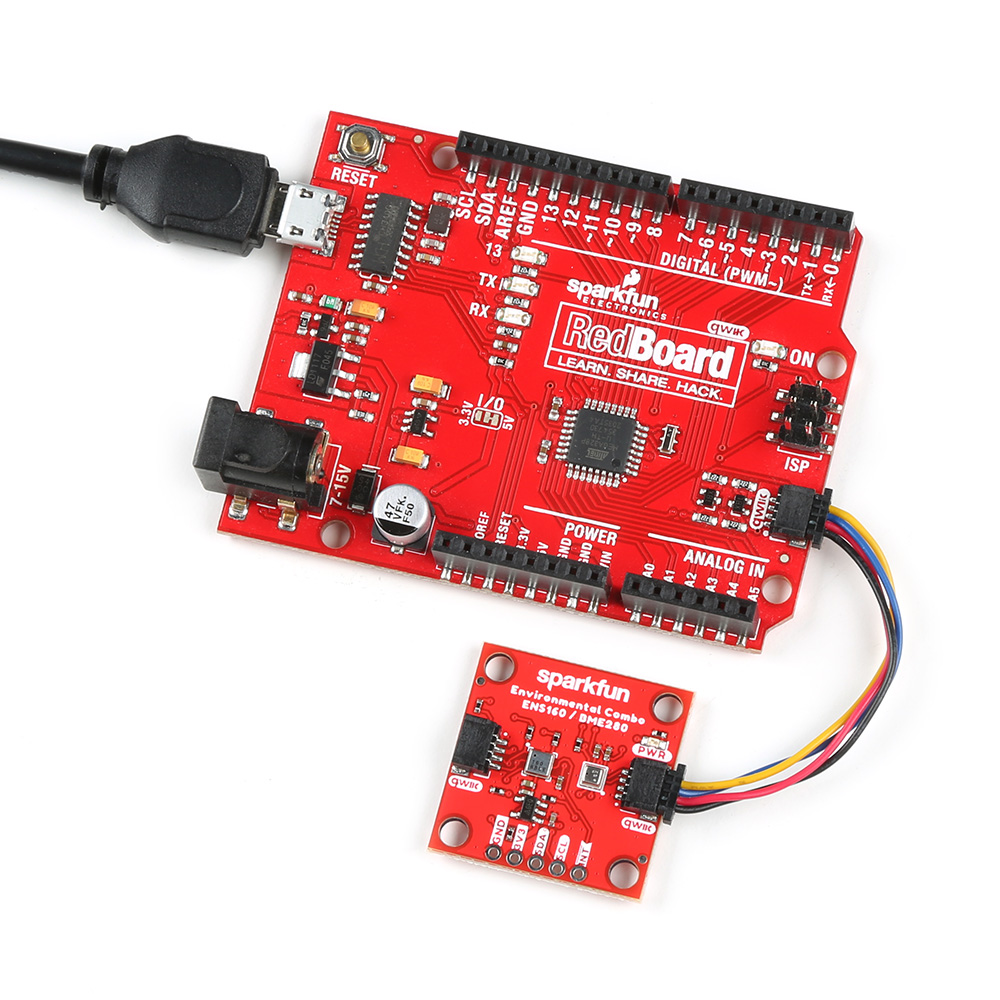
I just wanted to note that this module will likely require active cooling to not have a temperature offset compared to a stand alone BME280. If I don't actively flow air over the module this module will have a 7 or 8 degree differance in temperature compared to a standalone BME280 module located right next to it. Besides that, the module is great and super easy to use as all the Qwiic modules.